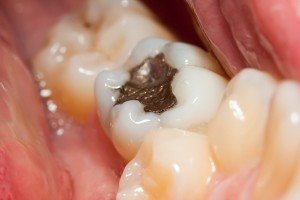A Brief Overview Of The Different Types Of Fillings
 When one of the dentists at Community Dental Group tells you that you have a cavity you immediately know that a filling is going to be required. The basic procedure involves finding the decay, removing it, and then having the area filled in order to restore the tooth. It is the most conservative method for restoring any tooth that has been damaged by decay. However, most of our patients are not aware of their options where filling materials are concerned.
When one of the dentists at Community Dental Group tells you that you have a cavity you immediately know that a filling is going to be required. The basic procedure involves finding the decay, removing it, and then having the area filled in order to restore the tooth. It is the most conservative method for restoring any tooth that has been damaged by decay. However, most of our patients are not aware of their options where filling materials are concerned.
Although tooth-colored and silver amalgam composites are the two most common types of filling material, there are others that you should be aware of. The following is a breakdown of the 5 different materials including the two aforementioned composites:
Ceramic fillings – these fillings are aesthetically pleasing and extremely durable because they are made from porcelain. Although, ceramic fillings are more costly than the other types, they are colored like your natural teeth while being extremely resistant to abrasives and stains compared to composite resins.
Glass ionomers – being made from a combination of acrylic and glass makes these fillings a good option for growing children because their teeth are continually changing. However, they only last for 5 years at most. On a positive note, these fillings help to prevent further decay by releasing fluoride.
Gold fillings – despite the fact that gold is one of the more expensive alternatives, the material is non-corrosive and very sturdy. However, gold is not as commonly used as it once was. Additionally, the procedure is somewhat inconvenient as it usually involves more than one visit to the dentist in order to ensure that the filling is fitted properly. However, gold fillings can last for 15 years or longer.
Silver amalgam – although this is a blend of copper, mercury, silver, tin, and zinc, mercury comprises about half of the total mixture. The reason silver amalgam is the most popular and widely used material is attributed to its cost-effectiveness, durability, and strength. Despite its lack of aesthetic appeal, silver amalgam fillings have a lifespan of 15 years or more.
Tooth-colored composites – because it is easy to match this material to the color of your teeth, composite fillings are extremely popular. When the material is placed in the tooth, the dentist uses a bright blue curing light to harden the material. Composite materials are quickly becoming the most popular types of fillings despite the fact that they are not as durable or as long-lasting as silver amalgam fillings.